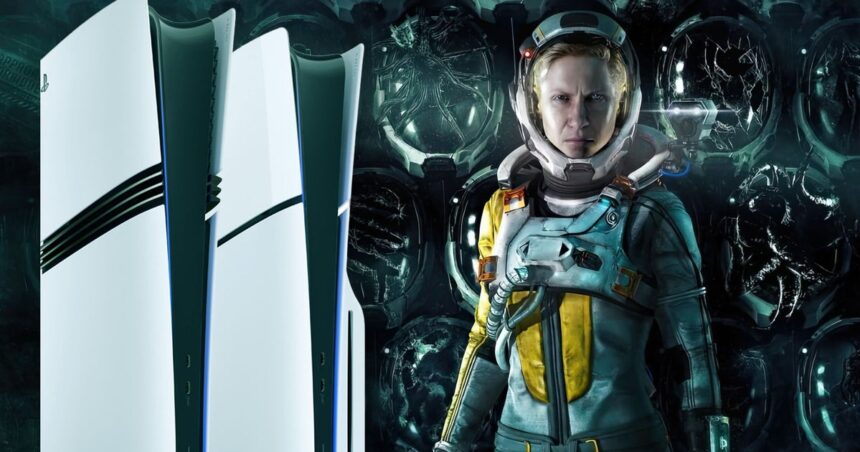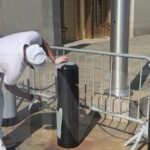Celebrating its fourth anniversary, Housemarque has unveiled an enticing free upgrade for Returnal on PlayStation 5 Pro. This enhancement promises an impressive resolution boost of up to 2.5x, allowing gamers to experience this already stellar title on Sony’s enhanced hardware in stunning detail. The phrase “up to 2.5x” hints at dynamic scaling, which I’ll delve into shortly. It’s a commendable step that addresses some of the visual shortcomings found in the original PS5 version. However, what other enhancements can we look forward to? Are previous performance hiccups resolved? And how does the traversal experience fare?
For those who may need a reminder, the standard PS5 has maintained a fixed base resolution of 1080p, which is temporally reconstructed to 1440p and upscaled to 4K through checkerboard rendering. Although the game showcases impressive technology—particularly with its vibrant particle effects—this unconventional method results in noticeable visual noise on the base model. It’s not a dealbreaker since gameplay remains prioritized, but intricate details can sometimes appear grainy. This setup pales in comparison to the PC version, which shines at native 1440p with DLSS.
Now, let’s get straight to the details. The PS5 Pro update elevates the resolution to a peak of 3072×1728, with dynamic resolution scaling adjusting based on GPU load. This feature is a first for the Pro version, moving away from the static 1080p limitation of the original PS5—this change also impacts frame rates. The lowest recorded resolution on the Pro is 2400×1350, observed during intense boss fights that demand significant GPU resources. It’s worth noting that even lower resolutions might emerge in future levels, but thus far, the maximum 1728p resolution has been consistently achieved across the initial three biomes, surpassing Housemarque’s original claim of a 2.5x increase and actually delivering a 2.56x upgrade over the base PS5 resolution of 1920×1080. A delightful surprise for players!
Comparing the PS5 and PS5 Pro versions yields expected results. While Returnal’s frantic action might not always highlight the enhanced resolution, a leisurely exploration reveals the benefits of the upgrade. Observing staircases or textured surfaces, the moire effects prominent on the original PS5 have significantly diminished. Flickering on hard edges is less noticeable, and those sudden bursts of effects that briefly reveal pixelation exhibit reduced aliasing.
Despite the upgrades, the PS5 Pro still experiences some temporal instability. The familiar cross-hatch effect during 4K upscaling persists, albeit subtly due to the increased pixel density. Not every frame is pristine; some edges remain raw if scrutinized, but they are considerably finer at the 1728p resolution. Additionally, sustaining a 2.56x increase in resolution isn’t feasible in all scenarios. With a 1.45x increase in GPU power over the standard model, we encounter some mismatch with the demands of the resolution boost.
This is where dynamic resolution scaling proves beneficial: it maximizes the quality of frames whenever GPU capacity allows, but even at its lowest points, the image quality surpasses that of the base PS5. It’s a missed opportunity that the original PS5 wasn’t retrofitted with DRS. The Pro patch delivers on its promise effectively. However, no other visual enhancements, such as volumetrics, alpha effects, and textures, have been introduced; it simply leverages the Pro’s superior GPU capabilities without any extensive tweaks.
Shifting our focus, it’s important to acknowledge that there were alternative paths Housemarque could have taken with the PS5 Pro update. One enticing option could have been a 120Hz mode, even if it required a slight resolution reduction to maintain a steady 120 frames. Another exciting opportunity was to integrate features like ray tracing from the PC version. While ray-traced reflections and shadows come with their own limitations on PC, having an optional RT mode on the Pro would have been a fascinating addition. Instead, these features remain exclusive to PC, and even many of the epic settings available there—like enhanced volumetric resolution—are missing on the Pro. Ultimately, what we get with the Pro is a singular option without any graphical toggles, yet it achieves its intended enhancements well.
Performance testing presents its challenges. The inherently randomized design of Returnal makes head-to-head comparisons between the PS5 and Pro rather complex. To recap: the base PS5 generally runs smoothly at 60 frames per second, though frame drops do occur under specific conditions. For instance, during the opening boss battle in the Overgrown Ruins level, frame rates can dip into the mid-50s, and minor drops are observed during intense combat in the Tower of Sisyphus. Interestingly, upon respawning back at the ship, a brief, jarring segment can see frame rates plunge into the 40s momentarily, but this quickly stabilizes once Selene regains her posture. I also noted an unusual drop to 55fps at a staircase early in the game, seemingly without significant activity. These instances stand out amid a generally smooth 60fps experience, with only a few one-frame stutters worth discussing during traversals.
Switching to the PS5 Pro, it’s possible to replicate some of these situations. The encouraging news is that boss encounters—like those at the start of the first biome and within the Tower—now maintain a stable 60fps performance. Thanks to a higher GPU clock rate and greater flexibility afforded by dynamic scaling, these areas are now consistently anchored at 60fps, which is fantastic. Overall, the dynamic resolution scaling—from 1350p to 1728p—appears well-optimized for the capabilities of the PS5 Pro. While there may still be drops in more random parts of levels, with enough progression, the fully patched PS5 Pro should yield more stability. Departing from the fixed 1080p of the original model allows for more adaptability in handling rapid visual changes.
However, slight traversal hiccups endure, and users may experience a slightly increased frequency of frame-time spikes to 50ms on the PS5 Pro—often coinciding with attacks landing on enemies. It appears the console may take a moment to adjust its resolution to suit sudden GPU demands, resulting in a noticeable spike in the frame time graph.
Regarding overall Pro performance, it’s worth mentioning that time could reveal more noteworthy frame drops. After multiple days playing through the third biome and the Tower area, however, I encountered no significant drops thus far. Nonetheless, the game’s random nature does imply that some challenging sections may introduce more taxing scenarios. On forums like Resetera, some users have reported frame-rate declines with the Pro patch in place, suggesting that performance might have been smoother in a pre-patch state using the base PS5’s rendering methods. This could be plausible, considering the original resolution targets were relatively conservative and the Pro should handle them effortlessly. Still, the outlook remains optimistic based on stress-testing evidence: the PS5 Pro holds 60fps better and delivers a sharper image as well.
Though the Pro patch for Returnal comes unexpectedly, it’s a delightful surprise for fans eager for more support from Housemarque. While the resolution and performance upgrades might not be the most courageous use of Pro capabilities, the degree of the increase is impressive. With a 2.56x rise in resolution, one can’t help but question if dynamic scaling alone justifies the leap when the Pro hardware offers only a 45 percent boost in performance. Regardless, the overall upgrade is admirable: the only minor drawback is a higher occurrence of 50ms frame-time hitches at key moments, but the benefits of achieving a more stable 60 frames per second with enhanced image quality certainly outweigh the downsides. Returnal remains one of the finest shooters of this generation, and this Pro upgrade offers a fantastic reason to dive back into one of gaming’s modern classics.























